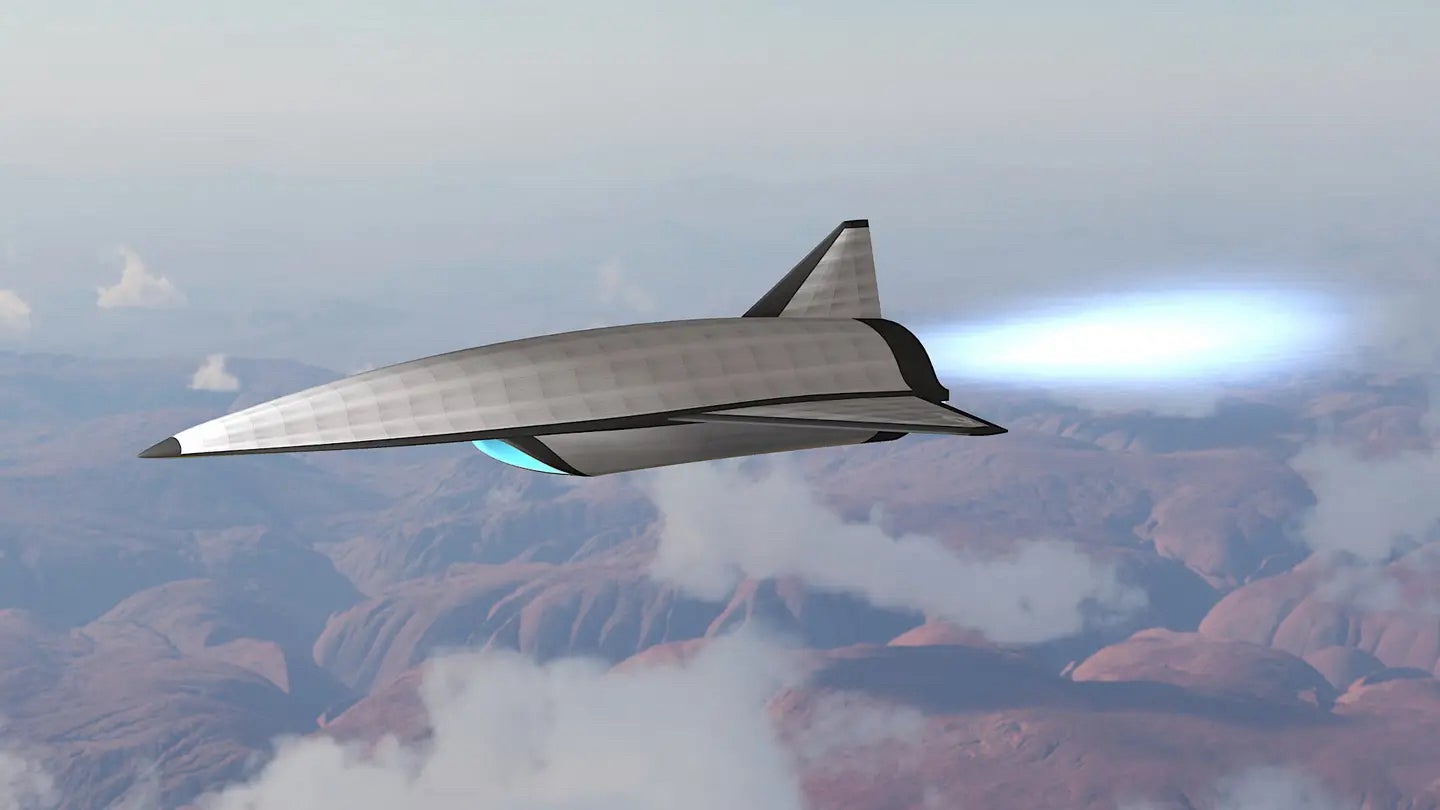
Mayhem is an odd name for a spy, but it’s a pretty good name for a superfast jet. On December 16, the Department of Defense awarded contractor Leidos $334 million to develop a hypersonic flying scout. The award is technically for the “Expendable Hypersonic Multi-mission ISR (intelligence, surveillance, and reconnaissance) and Strike program,” but it’s also known as Mayhem. It will be uncrewed—a drone.
“The Mayhem system will use a scramjet engine to generate thrust, propelling the vehicle across long distances at speeds greater than Mach 5,” Leidos said in a release.
Hypersonic is the threshold defined as five or more times the speed of sound. Many of the recent developments in hypersonic technology have focused on weapons such as missiles that fly fast to evade detection and interception. Speed is profoundly useful for a weapon, as the force of a fast impact can be tremendously deadly even without a warhead on board.
What sets Mayhem apart from more outright destructive designs is that, while still intended to be expendable, the hypersonic Mayhem is a tool more for finding out than flying around.
ISR, which stands for intelligence, surveillance, and reconnaissance and is generally the Pentagon’s acronym for everything involved in discovering, observing, and monitoring activity below, is a mission often associated with slow-moving vehicles. Drones, like the medium-altitude Reaper or the ultra long-endurance Global Hawk, are built to keep watch on activity below, informing how soldiers, sailors, and pilots below all respond. Yet some missions cannot be done at the ponderous speeds of Reaper’s prop engine, or wait for an overhead satellite to be in place.
It is likely in that void, where the need is urgent and the information collection is dangerous, that Mayhem will work best.
Past is prologue
One way to understand the role the Mayhem might have is to look at the history of superfast spy planes. The most famous of these is the SR-71 Blackbirds, and its single-seat, CIA-piloted predecessor, the A-12, also known as Oxcart. Both planes were designed to take photographs without being shot down by anti-air missiles, which had advanced considerably in power and accuracy into the Cold War. The Soviet Union used a ground-to-air missile to shoot down a U-2 spy plane in 1960, and while U-2s still fly today, there are certain missions better suited for a faster vehicle. The Oxcart flew missions for the US above North Vietnam in 1967 and 1968, before it was retired. The two-seat Blackbird, with room for a pilot and a person to crew the sensors, operated into the 1990s
“The SR-71 was designed to fly deep into hostile territory, avoiding interception with its tremendous speed and high altitude. It could operate safely at a maximum speed of Mach 3.3 at an altitude more than sixteen miles, or 25,908 m (85,000 ft), above the earth,” notes the National Air and Space Museum.
The Blackbird entered service in the late 1960s, and was retired in 1998. In April 1988, a decade before the Blackbird’s retirement, Popular Science highlighted what the Air Force would want in a replacement, including a speed of Mach 5 and a service ceiling of above 100,000 feet.
There’s a third distant predecessor to Mayhem: the D-21 supersonic drone. Launched by planes, including the B-52, four D-21s were used to take photographs of China between 1969 and 1971. The drone was designed within the limits of the technology at the time, which meant film cases that had to be ejected and recovered, before they were to be processed in a darkroom. The D-21 flew a fixed path, and then detonated after its mission. None of the four flights over China produced recoverable images, and the program was abandoned.
Developing a new hypersonic spyplane has long been a goal of the Air Force, with reports of new concepts sprouting periodically.
Uncrewed is good news
What might make Mayhem a better bet in 2022 than any prior attempt at a Blackbird replacement is a conflux of factors, all of which have led to improved drone technology. Removing the need for a pilot onboard a plane can shrink its overall profile, and lets the aircraft operate without the constraints of having to keep people onboard alive.
Cameras, data processing, and wireless data transfer have all improved tremendously in the past decades. The era of using film cameras for aerial surveillance finally ended this summer, and with it the constraints of having to collect or process film negatives. The cameras that make possible drone sensors, like the far-seeing pods on Global Hawks, show an industrial community proficient in far-seeing sensors, though taking pictures with clarity and at speed has its own obstacles. The Blackbird included sensors for listening and recording signals, like radar and radios, and those too could be incorporated into a hypersonic drone.
Like the D-21 before it, Mayhem can be expendable, where the loss of the drone need not mean the loss of information it collected. But expendable doesn’t have to mean that the drone is destroyed at the end of every mission, and a drone that could be recovered and reused offers a boon to military brass looking for a way to confirm reports by photography
“This program is focused on delivering a larger class air-breathing hypersonic system capable of executing multiple missions with a standardized payload interface, providing a significant technological advancement and future capability,” is all the detail provided by the contract announcement for what Mayhem actually will do.
However Mayhem ultimately develops, it will fill a void the Air Force has left open for almost thirty years.
The post The Mayhem drone will aim to collect intelligence at hypersonic speeds appeared first on Popular Science.
Articles may contain affiliate links which enable us to share in the revenue of any purchases made.
from Popular Science https://ift.tt/yZLu8wS



0 Comments